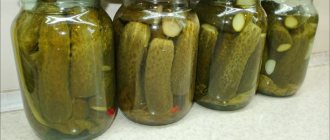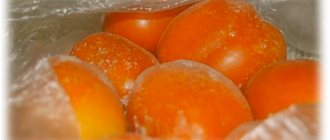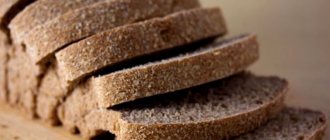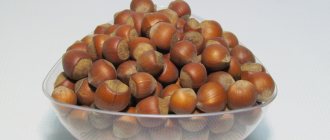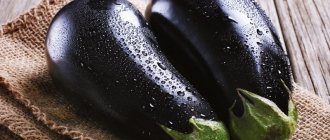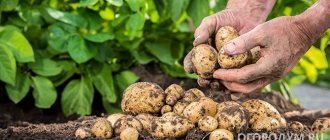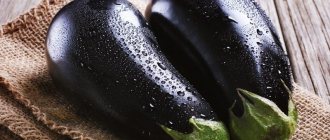It is believed that this vegetable begins to lose its beneficial properties just three days after being separated from the mother bush. However, there are several proven methods that help gardeners and modern housewives preserve the nutritional value of their favorite product for a longer time. Some methods allow you to wait until the last cucumber harvest until Christmas, keeping the vegetables fresh and crisp for a whole month.
Cucumbers should not be stored in the same container with ripe fruits. The latter tend to release ethylene, a gas that stimulates the overripening of fruits. Therefore, such a neighborhood can lead to yellowing of the greens.
Long-lived vegetables
If you intend to store fresh cucumbers for a long time, assess all the risks in advance. The fact is that not all varieties are suitable for long-term storage. Therefore, figure out whether vegetables are suitable for achieving your goals. And if not, eat them fresh and buy a more shelf-stable variety instead.
- Ground. The ones that last the longest are ground cucumbers that are grown with your own hands in a garden bed and have a thick peel. Greenhouse varieties are not suitable for long-term storage; they are too thin-skinned. That is why mucus appears on their surface literally on the second day after placing vegetables in the refrigerator, followed by rot.
- Dense and undamaged. If you intend to purchase vegetables intended for long-term storage in a supermarket or market, give preference to medium-sized cucumbers. They should have a thick skin. Damaged vegetables are not suitable for these purposes. Like cucumbers hidden in plastic packaging. This product is intended to be consumed within two to three days. It is not recommended to even open the plastic packaging until you decide to eat what you bought. Otherwise, the risk of almost instantaneous damage will increase significantly.
Sluggish or too large fruits of a garden plant are not suitable for long-term storage. The former spoil too quickly, and the latter lose their pronounced cucumber taste in a short period of time. As for small cucumbers, they, unfortunately, dry out quickly. Therefore, it is better to use them for pickling or salting.
It is strictly forbidden to wash cucumbers before storing them. The vegetable has a special “native” coating designed to prevent the process of rotting.
Selection of fruits for storage
The main requirement for selecting greens for long-term preservation is freshness. They take vegetables only collected from the garden.
Those that have already been lying around for some time or have been transported over long distances are not suitable. When purchasing, the appearance of the entire batch of cucumbers is assessed, not individual specimens. It is not recommended to select the best ones among substandard ones: they will quickly deteriorate.
They take vegetables only collected from the garden
Choose elastic cucumbers, with strong peel, without external damage . These are usually vegetables grown in open ground rather than in a greenhouse. Before storing the fruits, do not wash them, otherwise they will begin to rot prematurely.
Good keeping quality is inherent in the following varieties:
- Sadko.
- Parade.
- Bush.
- Unworn.
- Competitor.
The following varieties are suitable for pickling:
- Zozulya.
- Voronezh.
- Bush.
- Pickle F1.
- Crisp.
Cucumbers of these varieties are small in size (up to 16 cm in length), with shiny thin skin, lumpy, sometimes with spines.
The pulp of the fruit is dense, without voids, and the peel is dark green in color.
Choose elastic cucumbers, with strong peel, without external damage
Which cucumbers are not suitable for storage?
It is not recommended to try to preserve fruits:
- too watery;
- with thin skin;
- overgrown, beginning to turn yellow;
- early-ripening greenhouse-type varieties used for preparing salads.
How to store fresh cucumbers in the refrigerator or cellar
The most important rule that will help preserve fresh cucumbers for winter is as follows: the greens must be dry and clean. Clean - but not washed. Vegetables need to be washed only if stored in egg whites, but more on that below. By “clean” we mean that there are no clods of earth on the vegetables. Dried soil must be removed from cucumbers before storage. Moreover, this must be done carefully so as not to injure the vegetable. After this, you can choose the most appropriate storage method. The table will tell you which method of storage in the refrigerator or cellar is the longest.
Table - Storing fresh cucumbers at home: methods and timing
| Method | Maximum storage duration, days | Storage method |
| - In the box | 5 | - Basement; - pantry |
| - In sand | 30 | |
| — Vinegar | 60 | |
| - In cabbage | 60 | |
| — In the vegetable tray | 7 | - Fridge |
| — In a plastic bag | 10 | |
| - In paper napkins | 14 | |
| — In egg white | 21 | |
| - In icy water | 30-40 | |
| — In a three-liter jar with a candle | 60 | |
| - Deep freeze | 270 | — Freezer |
| — Antique | 90 | — Keg |
In the box
- We take a wide but low cardboard box.
- Place the vegetables on the bottom so that they touch each other as little as possible, forming a single layer.
- Cover the laid greens with cling film.
- Using a toothpick, make 10-15 holes on the surface of the film (depending on the area of the cardboard container - the larger it is, the more holes you need to make).
- We put the box in the basement, closet or any other dark, cool place that allows you to store fresh cucumbers at a temperature of 15°C.
Using this method, you can store fresh cucumbers in the summer. The greens will stay fresh and crispy for about five days.
In the vegetable tray
- The simplest and most accessible storage method without a basement involves using the main kitchen assistant - the refrigerator: we put the cucumbers in the vegetable tray, which is located below.
- Place clean white paper on the bottom of the tray.
- We form one cucumber layer without placing the fruits on top of each other. Otherwise, the greens may rot due to insufficient air circulation. There is no need to cover the cucumbers with anything.
If the refrigerator works well and does not freeze the food contained in the main compartment, the crispy fruits will retain their nutritional value for one week.
In a plastic bag
- Place the cucumbers in a plastic bag.
- We open the packaging as much as possible to ensure high-quality air circulation for the products.
- We wet a cotton kitchen towel and cover the greens on top.
- As it dries, we re-moisten the towel so that the vegetables can retain their freshness for up to ten days.
If you have a vacuum sealer on your farm, you can arrange special packaging for cucumbers for long-term storage. Carbon dioxide will keep the product “in good shape” for a whole month.
In a “blanket” of paper napkins
- We wrap each fruit in a paper kitchen towel so that its skin does not come into contact with other fruits.
- Place the wrapped cucumbers in a three-liter jar.
- Close the container tightly with a nylon lid.
This method allows you to store fresh cucumbers in the refrigerator for up to 14 days.
In protein coating
- Separately, carefully wash each cucumber under running water, being careful not to damage the skin. This is the only case when you need to wash cucumbers before storing them.
- Place the fruits on a towel and dry thoroughly.
- Separate the egg white from the yolk and beat the first thoroughly with a whisk.
- Using a pastry brush, coat each green leaf with egg white. The protein coating will create an additional protective film on the surface of the fruit, which will reliably retain moisture inside the vegetable.
- Place the greens on the grill until the protein coating is completely dry.
- Place them in a vegetable tray and store fresh for up to three weeks.
Reviews from experienced summer residents indicate that by hanging cucumbers in a protein film by their tails in a basement or cellar, you can keep them fresh even longer - up to a month.
In sand
- Pour clean sand into the bottom of a pan or plastic container.
- Place the greens on it in one layer so that the pimpled vegetables fit snugly against each other.
- Fill the first layer with sand and lay out the second.
- We form additional layers in the same way, filling the container or pan to the top.
- Place the container with sand and cucumbers in a closet or basement and store at a temperature of 4 °C.
The sand layer prevents the formation of high humidity and prevents cucumbers from turning yellow and withering. Therefore, storage using the described method can last up to a month.
In vinegar
- Pour 9% vinegar into an enamel pan or other metal container in an amount that will cover the bottom by 1.5 cm.
- We place a lattice made of wood on the bottom, which will prevent the greens from touching the acid.
- Place the cucumbers on the grill and tightly close the pan with a lid.
- We put the container with green fruits in the basement or pantry.
The vinegar method will preserve the “fresh from the garden” effect for up to two months.
In icy water
- Freeze ice using a special mold.
- Place the finished ice in a large quantity in a vegetable tray. Melt water should cover the bottom of the tray by about 2 cm.
- Dip the cucumbers into ice water so that only their tips are in the water.
- Every two days we replace the ice water with fresh water.
- We maintain the temperature in the refrigerator at +2 °C and store for a month, or even a month and a half.
If the temperature in the refrigerator drops to 0 °C, mucus will begin to form on the fruits and they will lose freshness faster.
In a three-liter jar
- Place small cucumbers in a three-liter jar so that the glass container is three-quarters full.
- We place an ordinary paraffin candle inside the jar and, after finishing arranging the vegetables, light it for five to ten minutes.
- After the specified time, when the oxygen contained in the jar is completely destroyed and turned into carbon dioxide, cover the container with a nylon lid. Do not blow out the candle - ten seconds after the jar is sealed, it will go out on its own.
- We send the jar of greens to the cellar or refrigerator.
Fresh cucumbers can be stored in this way so that they do not wither or spoil for about two months.
In cabbage
- We plant cucumber seeds between cabbage seedlings in this order: seedlings, cucumber seeds, seedlings, cucumber seeds - and so on.
- As soon as the first ovaries appear, we place the tiny greens between the leaves of the cabbage head. After full ripening, ripe cucumbers will appear between cabbage leaves tightly adjacent to each other.
- We pick the head of cabbage along with the cucumbers and store it in the basement for up to three months.
The old way in a barrel
- Place the collected dry and clean cucumbers in a wooden barrel and cover it tightly with a lid.
- We lower the barrel to the bottom of a river or other nearby body of water.
Running water works wonders: greens remain fresh in its embrace for up to three months.
Is it possible to freeze greens?
Peculiarities. It is believed that cucumbers do not freeze. The fact is that this vegetable is 95% water. Therefore, after defrosting, it is unsuitable for consumption: the fruits simply turn into a slimy porridge - unappetizing and devoid of any taste. But you can still keep greens fresh for up to nine months. The secret is blast freezing, which turns the vegetable into ice in an instant. Flash freezing is a method of instantly freezing food at -18°C. This method allows you to preserve the nutritional value and taste of cucumbers for almost a whole year.
Algorithm of actions
- Cut the greens into slices.
- Place in one layer on a wooden or plastic board.
- Freeze it.
- Remove the pieces turned into ice from the board into a plastic bag or plastic container intended for storage in the freezer.
Cucumbers preserved by deep freezing are suitable for making salads.
Possible storage problems and their solutions
Frequently encountered problems when storing cucumbers are the appearance of mold, rotting, loss of presentation and taste.
To prevent this from happening, a number of recommendations must be taken into account:
- Cucumbers are not washed before storing in the cold, so that the rotting process does not start prematurely.
- Do not keep apples, bananas and melons near vegetables. They release ethylene, which has a detrimental effect on cucumbers - they begin to rot.
- Do not store the crop at zero temperature, otherwise the fruits will become covered with mucus.
- The packaging cellophane is not tied, otherwise the fruits will “suffocate”.
Effect of temperature on keeping quality
The air temperature in the room or chamber in which cucumbers are stored is a fundamental factor influencing the duration of storage. The table will be your quick guide to temperature conditions.
Table - Shelf life of cucumbers at different temperatures
| Temperature, °C | Maximum duration, days |
| 15 | 5 |
| 8 | 8 |
| 4 | 30 |
| -18 | 270 |
The variety of greens also affects the duration of maturation. Salad varieties, for example, are absolutely not intended for storage for a long time due to the minimal density of the skin. However, there are varietal cucumbers that, if certain rules are followed, do not spoil for a very long time. These include “Kustovye”, “Kharkovskie”, “Nezhinskie”, as well as “Competitor”, “Sadko” and “Parade”.
Now you know almost everything about how to store fresh cucumbers at home. And even if one day you happen to spend time in the wilderness without any communications, you can save the harvest by using the most ancient of the methods described. There is only one thing left to learn: only those greens that were collected last night or this morning are suitable for storage. And if, when buying vegetables at the market, you are not sure of the seller’s words regarding the harvest date, do not risk it. It’s better to eat the purchased cucumbers fresh, and prepare others from your own garden for the winter.
Video on the topic
What varieties of cucumbers store best?
The shelf life of cucumbers largely depends on the variety you grow, so it is important to take this criterion into account when planting vegetables.
| Variety | How many weeks does it keep? | |
| 1 | Nezhinsky | 2,5-3 |
| 2 | Kharkovsky | 2,5 |
| 3 | Sadko | 2-2,5 |
| 4 | Competitor | 2-2,5 |
| 5 | Bush | 1,5-2 |
